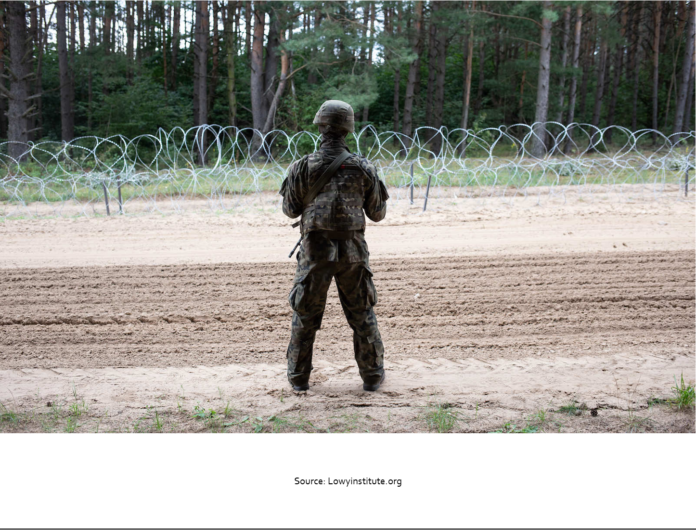By Reilin Lyu
Violence at the Polish-Belarussian border. A tidal wave of migrants flooding into the EU. Nearly a dozen dead from the ensuing crisis. You’ve likely heard these alarming news developments – what’s going on?
To answer this question, we need context. Poland and Belarus are neighboring Eastern European countries which share a 418-kilometer (about 260- mile) border. Poland is currently an EU Member State – it has been since 2004 – while Belarus, a Russian ally, is not. Tensions between the two countries have already been heightened by sanctions imposed by the EU on Belarus last year – sanctions which were supported by Poland.
These tensions recently boiled over when a surge of migrants, chiefly from Middle Eastern nations, began overwhelming the European continent in August of this year.
They are spurred by fear of the Taliban takeover of Afghanistan and for their safety in their politically unstable homelands. There are now claims that Belarus is utilizing these migrants as human weapons to further their interests from the Easternmost regions of the European Union, Poland being the other country on the forefront of the conflict – and countless people caught in the fray.
Belarus, still bitter from last year’s sanctions, has been accused by the EU of orchestrating the illegal crossing of Middle-Eastern migrants into Latvia, Lithuania, and Poland, hoping to pressure the Union into lifting the sanctions.
This year, Poland reports 24,500 attempted migrant crossings, mainly in October, a sharp increase from last year’s 120, which is too drastic to have been a coincidence. President Lukashenko of Belarus has denied the Polish and EU accusations of arranging this overwhelming increase, telling journalists: “We are not threatening anyone. You have put us in such circumstances that we are forced to react and we are reacting” (Time Magazine), despite a number of reports of Belarussian border guards physically forcing migrants across the fence on the Polish border.
All of this has landed both nations, as well as the migrants, in a difficult place, and as a result, violence has erupted on the volatile border – On November 16th, at the Bruzgi-Kuźnica border crossing, a crowd of migrants began throwing stones, concrete, and tree branches at Polish border guards. Seven of them were injured by these projectiles, according to the Polish Police.
In response to this antagonization, the guards used a water cannon against the migrants, which reportedly fired a liquid that caused chemical burns. This event has only fueled the migrants’ anger at their conditions, as well as both sides’ contempt towards each other. After the incident at Bruzgi-Kuźnica, President Lukashenko was further accused by the EU of deliberately putting migrants’ lives at risk, which Lukashenko denies, instead accusing Poland and the west of treating migrants poorly.
Meanwhile, Russia, Belarus’s close ally, remains defensive of Belarussian actions at the border, though it denies involvement in the conflict, and the EU is likewise continuing supporting Poland’s stance.
So, what’s in store next? The only real answer is, we don’t know. The geopolitical circumstances in the area are complicated and volatile, and new developments are always emerging.
How current tensions will manifest themselves later on, we cannot say. In such a constantly evolving situation, no accurate prediction can be made.
For now, however, we at the East Side News remain vigilant toward any unfolding occurrences that may change the situation.

